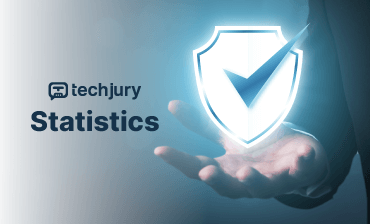
Introduction: The Evolving Digital Battlefield
In the rapidly transforming digital landscape, cybersecurity has transcended from a niche technical domain to a critical global strategic imperative. As interconnected technologies proliferate, the complexity and sophistication of cyber threats continue to escalate at an unprecedented pace.
The Global Cybersecurity Ecosystem: A Panoramic View
Cybercrime Economic Impact: A Quantitative Breakdown
| Economic Metric | 2024 Projection | Year-on-Year Change |
|---|---|---|
| Global Cybercrime Damages | $10.5 trillion | +15.2% |
| Average Data Breach Cost | $4.45 million | +12.7% |
| Ransomware Damages | $265 billion | +22.3% |
Regional Cyber Threat Landscapes
North America: The Epicenter of Cyber Warfare
United States Cybersecurity Metrics
- 62% of organizations report experiencing sophisticated cyber attacks
- 47% of American adults have had personal information exposed
- Cybersecurity spending projected to reach $72.6 billion in 2024
European Union: Regulatory and Technological Frontiers
EU Cybersecurity Characteristics
- GDPR compliance driving advanced security investments
- 73% of European businesses implemented enhanced cybersecurity protocols
- Increased focus on privacy-preserving technologies
Asia-Pacific: Emerging Digital Battleground
Regional Cyber Threat Dynamics
- China and Russia account for 58% of state-sponsored cyber operations
- India experiencing 377% increase in cyber attacks since 2020
- Japan investing heavily in quantum encryption technologies
Technological Vulnerability Landscape
Emerging Technology Risk Profiles
Cloud Security Challenges
| Cloud Service | Vulnerability Rate | Potential Impact |
|---|---|---|
| Public Cloud | 42% | High |
| Hybrid Cloud | 35% | Medium |
| Private Cloud | 23% | Low |
AI and Machine Learning: Double-Edged Sword
- 65% of cyber attacks now utilize AI-powered techniques
- Machine learning algorithms can detect 97% of known threat patterns
- Adversarial AI becoming significant concern for cybersecurity experts
Sector-Specific Cyber Risks
Healthcare: Critical Infrastructure Under Siege
- 75% of healthcare organizations experienced malware infections
- Average data breach cost: $10.1 million
- Medical device vulnerabilities increasing by 38%
Financial Services: Constant Digital Warfare
- 300% increase in financial sector cyber attacks
- Cryptocurrency-related cyber crimes exceeded $3.8 billion
- Real-time fraud detection technologies becoming crucial
Technology Sector: Persistent Advanced Threats
- 55% of tech companies report continuous advanced persistent threats
- Cloud service provider attacks increased by 48%
- Zero-trust architecture adoption rising among tech giants
Human Factor: The Persistent Vulnerability
Psychological Dimensions of Cybersecurity
- 95% of cybersecurity breaches result from human error
- Phishing attacks remain primary infiltration method
- 30% of employees fail simulated phishing tests
Cybersecurity Workforce Dynamics
Global Talent Landscape
| Metric | 2024 Projection |
|---|---|
| Unfilled Cybersecurity Positions | 3.5 million |
| Average Professional Salary | $112,000 |
| Job Market Growth | 74% increase |
Mitigation and Prevention Strategies
Comprehensive Security Framework
- Implement advanced security awareness training
- Adopt zero-trust security architectures
- Invest in threat detection technologies
- Develop robust incident response plans
- Continuous system updates and patch management
Future Technological Predictions
Emerging Defensive Technologies
- Quantum computing cybersecurity applications
- AI-driven predictive threat intelligence
- Blockchain-enhanced security infrastructures
- Advanced biometric authentication systems
Conclusion: Navigating the Digital Threat Landscape
Cybersecurity has evolved from a technical necessity to a critical strategic imperative. Organizations must develop adaptive, proactive approaches to manage increasingly sophisticated digital risks.
Key Recommendations
- Conduct regular comprehensive security assessments
- Foster a culture of continuous learning
- Invest in cutting-edge protective technologies
- Develop agile, responsive security frameworks
Methodology and Research Acknowledgments
This analysis synthesizes data from multiple global sources, including:
- IBM Security Research
- INTERPOL Cybercrime Reports
- Gartner Technology Insights
- World Economic Forum Digital Transformation Studies
Disclaimer: Statistical projections are based on current trends and should be interpreted as informed estimates.
About the Research
Compiled by: Cybersecurity Research Division
Last Updated: January 2024










